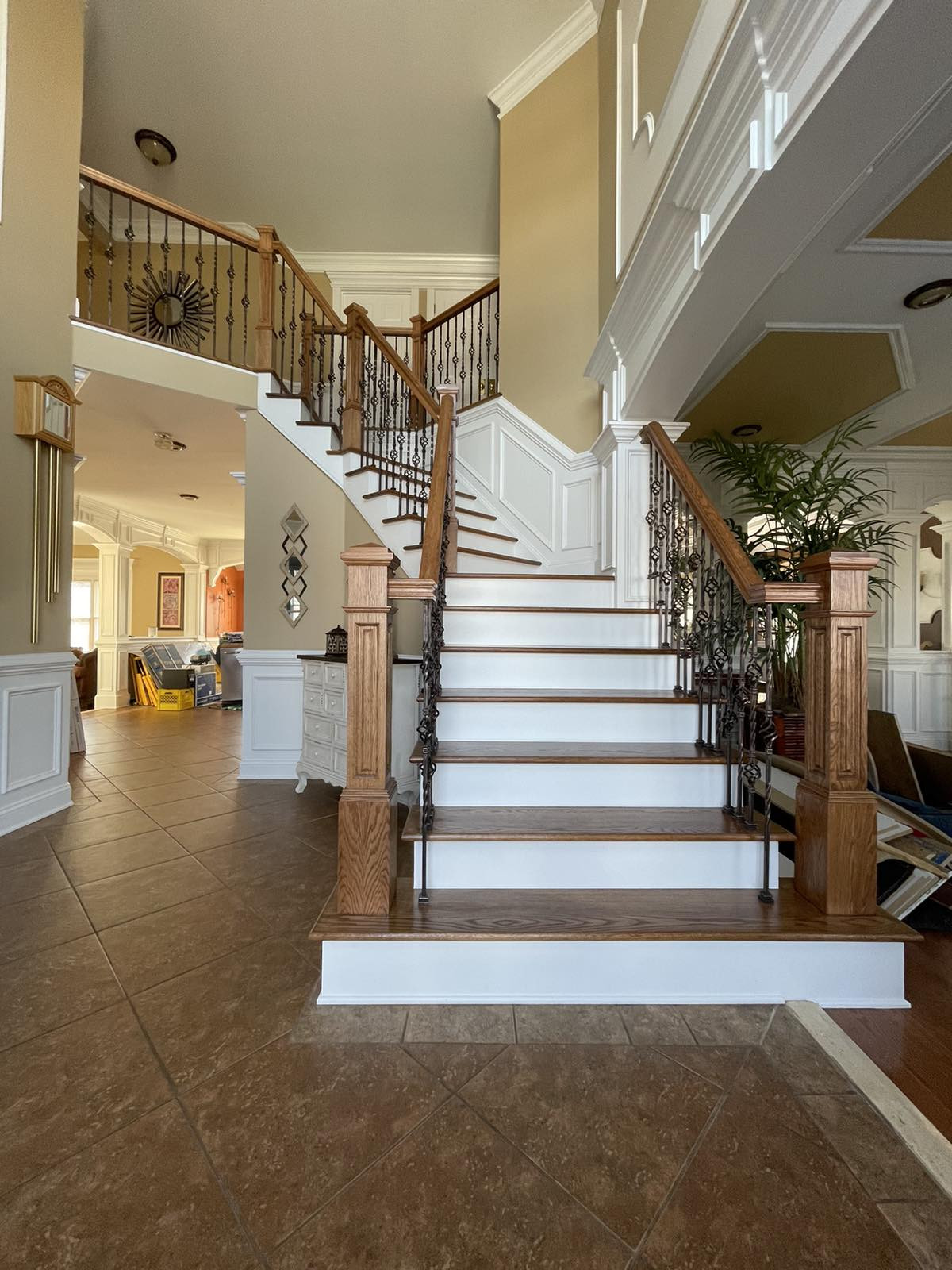Grand and elegant or simple and sleek, your staircase should reflect the style and decor of your interior aesthetic. When done right and matched to the rest of your home, even a small staircase can have a massive impact on the feel of your space. The first step to creating a custom staircase design is finding out which type of stairs you have and what type of renovations matched them best!
In this blog, we’re highlighting the main stair types to help find yours -and sharing some inspiration for what to pair with each! Keep reading to check out striking custom staircase designs, or start shopping right here!
5 Different types of Stairs
All staircases do the same job of connecting one floor to another-some just do it in very unique ways! We are defining the different types of stairs based on how they are built and where they are placed.
Straight Staircase
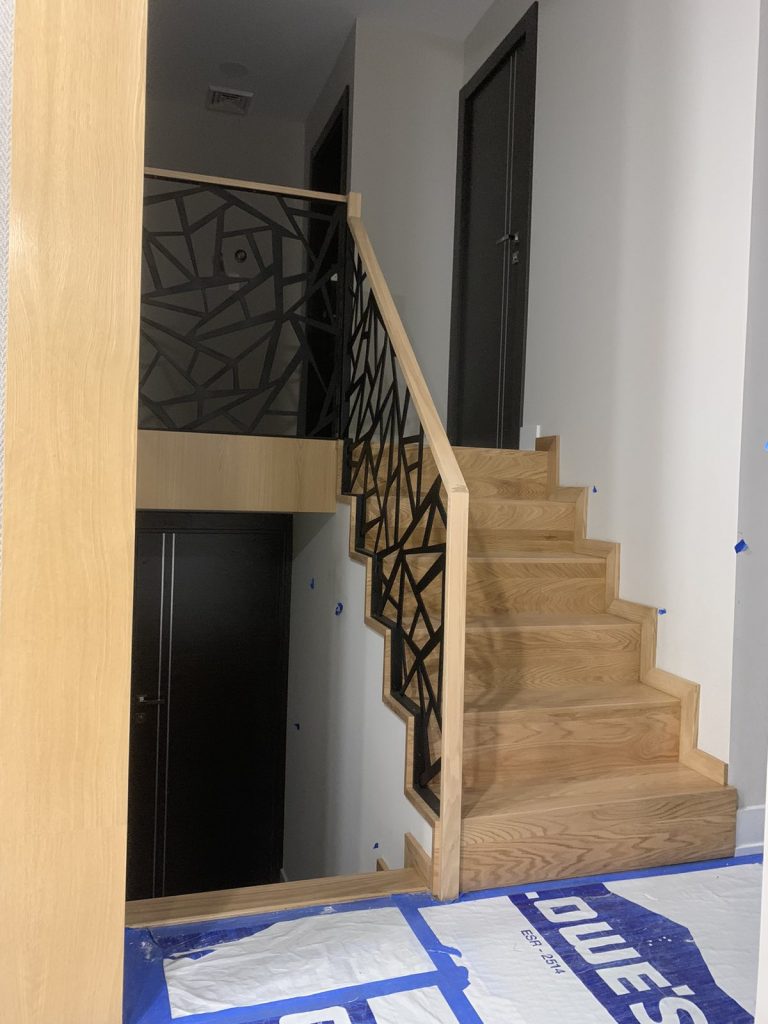
Of all the types of staircase, the widest spread is the straight staircase. These are typically used in long and narrow interiors. Due to its simplicity and effortless construction process, straight stairs are the most preferred to ascend or descend easily and provide an uninterrupted view of the entire flight of stairs.
A tried-and-true staircase design, a straight staircase is set against a wall and offers a straight connection from one floor to the next. Chances are, this is the type of stairs you have in your home. Compared to some other options, these different types of stairs tend to come in a simple style, but you can make them as ornate as you like.
L - Shaped Staircase
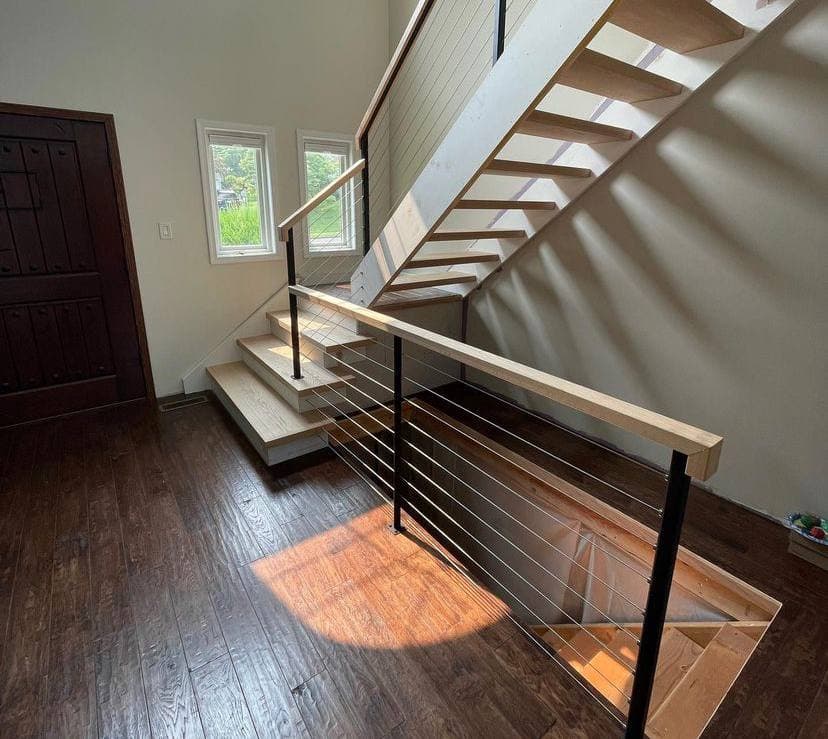
Somewhat similar to a straight staircase, L-shaped stairs have a single turn on a landing that leads into the straight section. The second most common option among the different types of stairs, these offer great stylistic versatility.
The bend is usually achieved by adding a landing at the transition point. The bend is often 90 degrees, however, it does not have to be.
L - shaped stairs can be more visually interested and they provide a visual barrier between floors so, they can add some privacy.
L - shaped stairs can help somewhat with sound transmission between floors if the stairs are contained within walls. Some believe they are safer than straight stairs as the central landing reduces the number of treads one could fall in a given flight.
Curved Staircase
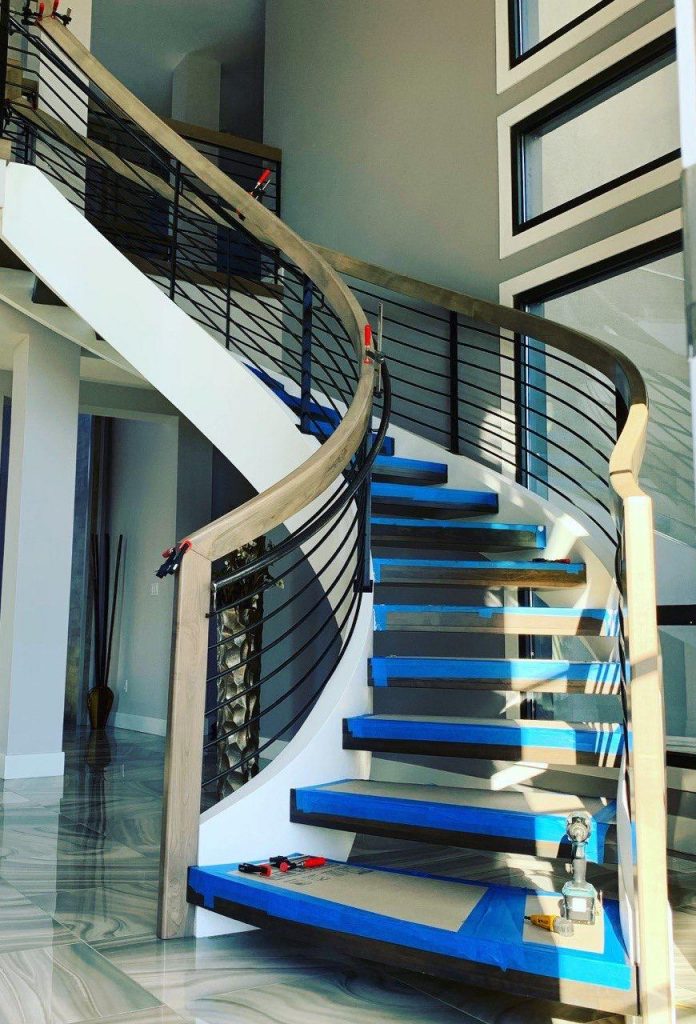
If you have a curved staircase in your home, it’s likely already the focal point of your home. Whether they are flush against a wall or free-standing, these types of stairs curve from one floor to the next. Custom staircase designs built around curved stairs do tend to be ornate just based on the classical architectural feel of a curved staircase.
Curved stairs add elegance to any home or business. For this reason, they are almost always located at the entry where they make the best first impression. They are relatively easy to walk up if the radius is large.
Curved stairs are by far the most difficult to build of the various types of stairs. In fact, building curved stairs represents a pinnacle of achievement for any stair builder or fabricator. For this reason, they are the most costly to build.
U-Shaped Staircase
U-shaped stairs are essentially two parallel flights of straight stairs joined by a landing that creates a 180 - degree turn in the walk line. Since these staircases are often somewhat compact and practical, typically a more minimal design has the best results here.
U - Shaped Stairs can be easier to fit into an architectural plan, they offer some architectural interest. These types of stairs are a bit more difficult to build than simpler stair types.
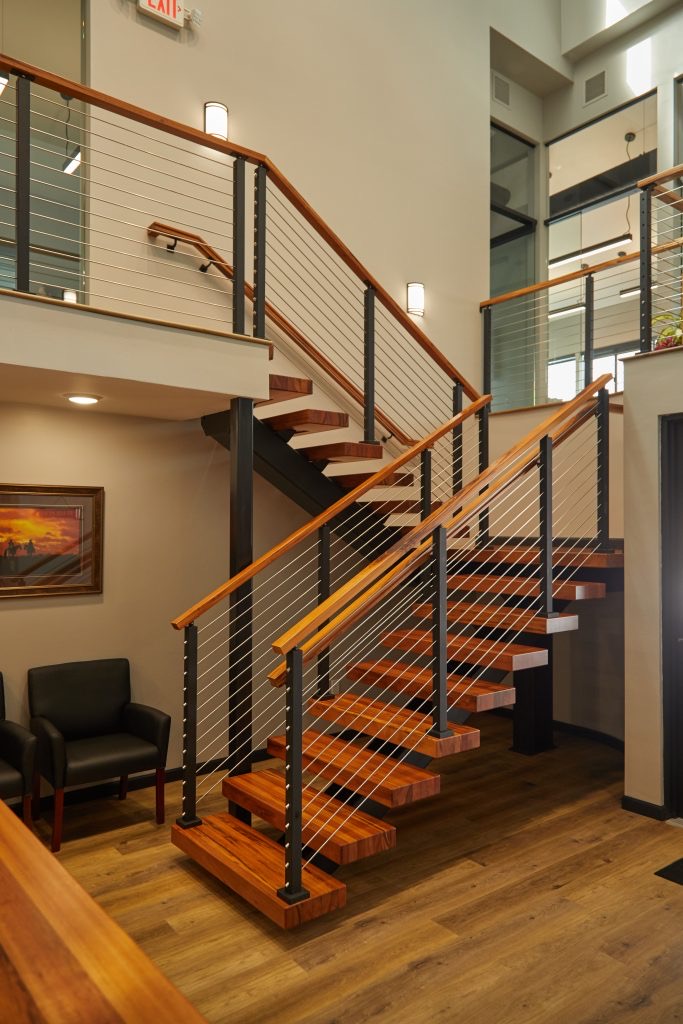
U-shaped stairs are essentially two parallel flights of straight stairs joined by a landing that creates a 180 - degree turn in the walk line. Since these staircases are often somewhat compact and practical, typically a more minimal design has the best results here.
U - Shaped Stairs can be easier to fit into an architectural plan, they offer some architectural interest. These types of stairs are a bit more difficult to build than simpler stair types.
Spiral Stair
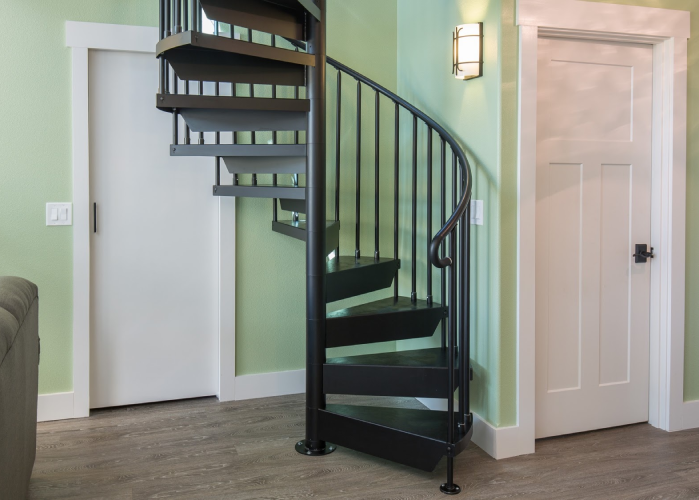
Spiral stairs follow a helical arc. They usually have a very compact design and the treads radiate around a central pole.
One of the key advantages of spiral stairs is their compactness. They are very popular on beach front decks where space is at a premium. They are also used extensively on city lofts for the same reason. Spiral stairs can be attractive and there are many variations on railings styles which can have a major impact on the overall appearance of the stair.
Spiral stairs are more difficult to navigate than other types of stairs. It is for this reason that codes do not allow them to be used as the primary access to a full second floor of a home.
Walkability improves as the outside diameter gets larger, so if you have space, you may want to consider going a bit larder. We recommend going 5 feet in diameter if you can.
It’s difficult to carry large items up spiral stairs. Only one person can go up or down the stairs at the same time.
